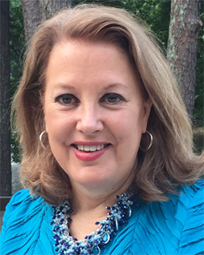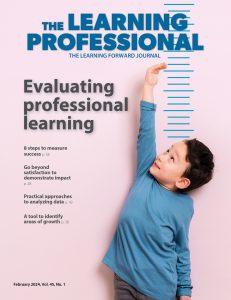By Janice Poda
Several years ago, I was an expert witness in an equitable funding lawsuit in my home state on behalf of the plaintiff school districts. After court recessed on a very tense day on the witness stand, I took a drive through the small town where court was being held — the same small town where I started my teaching career.
As I drove, Booker T. Washington’s words on a sign in front of a church caught my attention: “You can’t hold a man down without staying down with him.” I pulled over in the church parking lot and reflected on this powerful message.
I realized that our society, our state, and our students’ education would never be what we hoped for and desired until we provided an equitable education for ALL students. We are only as strong as our weakest link, and we had a long way to go to strengthen it.
The experience of the trial, my frustration that the issues raised in the lawsuit have never been resolved, the students I had the privilege to teach, my co-workers who courageously stood up for what was right for students regardless of the consequences, and being born and raised a Southerner and all the stereotypes that go along with that have all molded me into a passionate advocate for what should be the right of every American: a safe learning environment where all children receive the teaching, support, resources, and inclusion they need to be productive citizens.
The equity challenge
It is nearly impossible to find a school or district that doesn’t commit to educating “all” students or to meet “each” and “every” student’s need. Even with this commitment, too many students don’t experience the same high-quality learning experiences that their peers in the same class, school, district, or one across the country have access to. This is an equity challenge that must be addressed, especially when the students more likely to be lagging behind are students of color and students from high-poverty contexts.
Two important factors that schools and districts have the power to address are the quality of teaching and the quality of the curricula and instructional materials. When these factors are integrated and improved, they have the potential to address our equity challenges.
Equity starts with students having access to excellent teachers who can meet their academic as well as social and emotional needs. Every school year, teachers’ classrooms fill up with students who have different challenges, strengths, and dreams while, at the same time, teachers are striving to continuously improve their practice to make student learning relevant, interesting, and useful.
Being part of a learning system and participating in ongoing professional learning is essential for all educators to maintain and enhance their knowledge and skills to meet the needs of all students. Professional learning is the key to providing equitable access to excellent teaching.
Professional learning’s role
Another important factor in providing an equitable education is access to a rigorous curriculum and the instructional materials to support the curriculum. Effective use of high-quality, standards-aligned curriculum requires teachers who understand it deeply and use it with intentionality and professional judgment, based on their particular context and the needs of their students.
“Frequent and ongoing professional development is needed to support teachers in understanding, internalizing, and effectively using curriculum,” notes Instruction Partners, a nonprofit that works with districts to improve instruction (Instruction Partners, 2017). For more information, see Learning Forward’s recent report, High-Quality Curricula and Team-Based Professional Learning.
When all students experience high-quality teaching, they are more likely to learn. When all classrooms are filled with high-quality instructional materials, students are more likely to learn. Establishing these conditions for all learners will help close achievement gaps and provide ALL students with an equitable education.
It’s past time to reach out and make learning equitable for all. The time is now to overcome barriers to an equitable education for all students.
This post originally appeared in Learning Forward’s PD Watch.
Reference
Instruction Partners. (2017). What does it take to implement a strong curriculum effectively: Part one: What do we know about the experience of schools implementing rigorous curricula? Nashville, TN: Instruction Partners.
About the author
Janice Poda is a senior consultant for Learning Forward.








